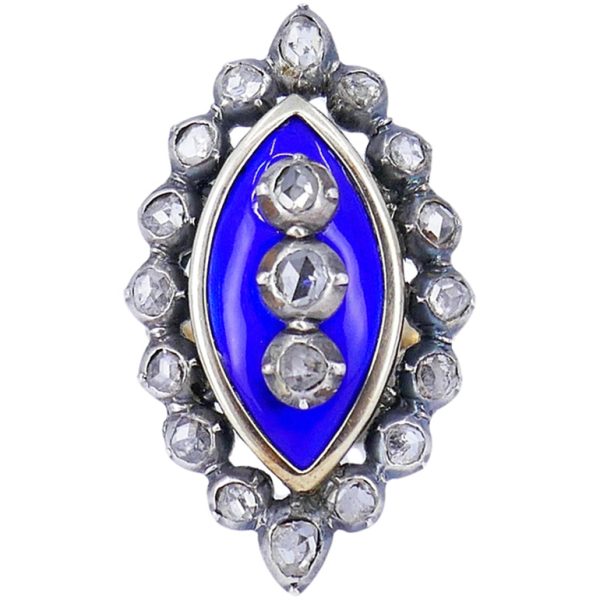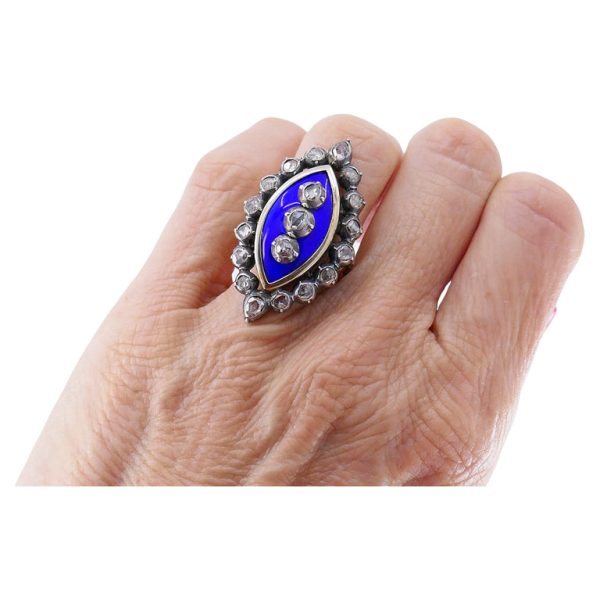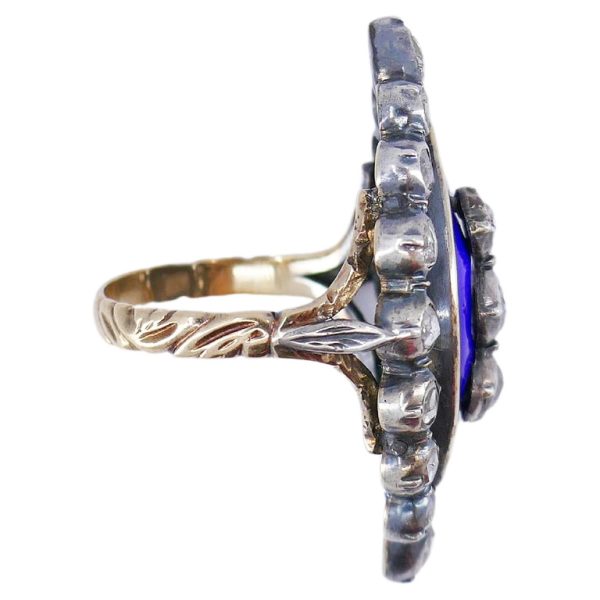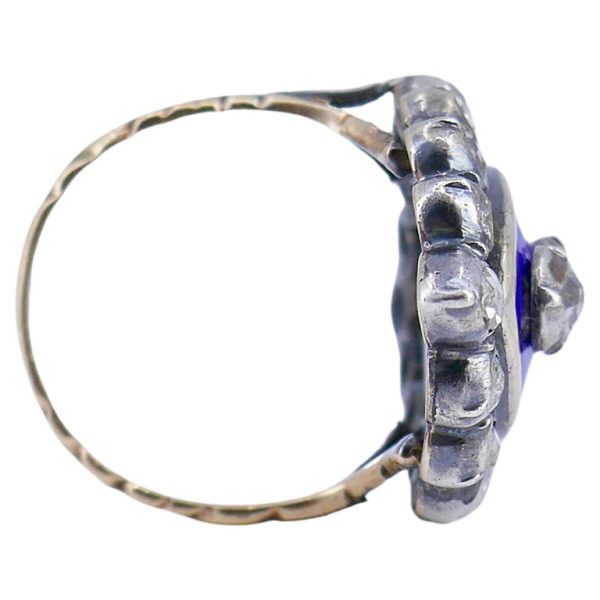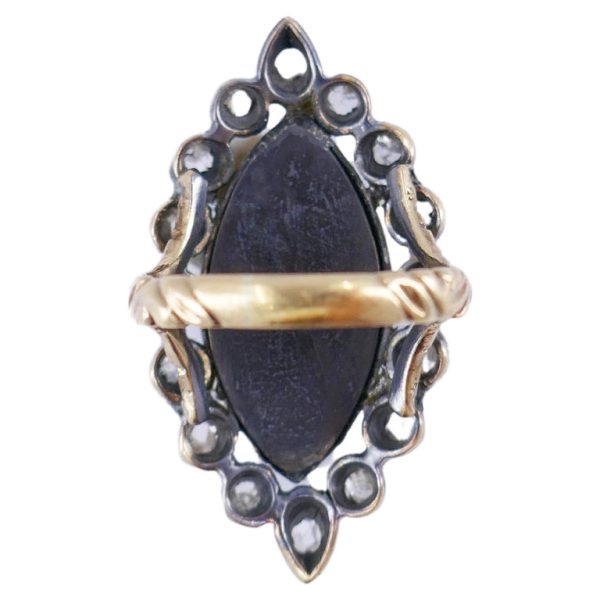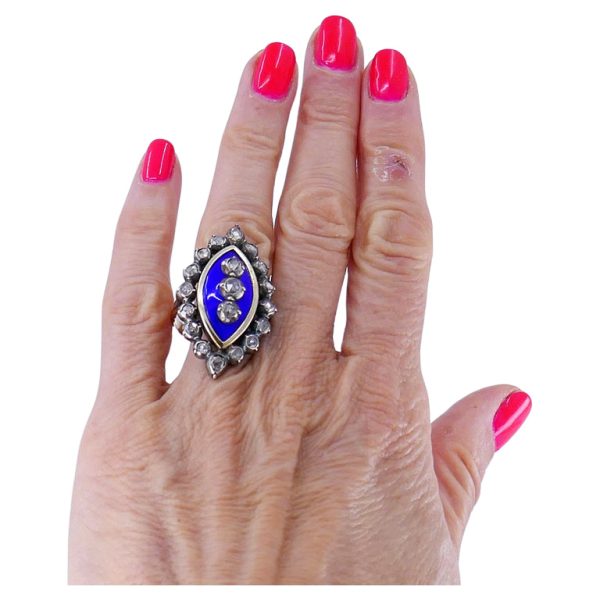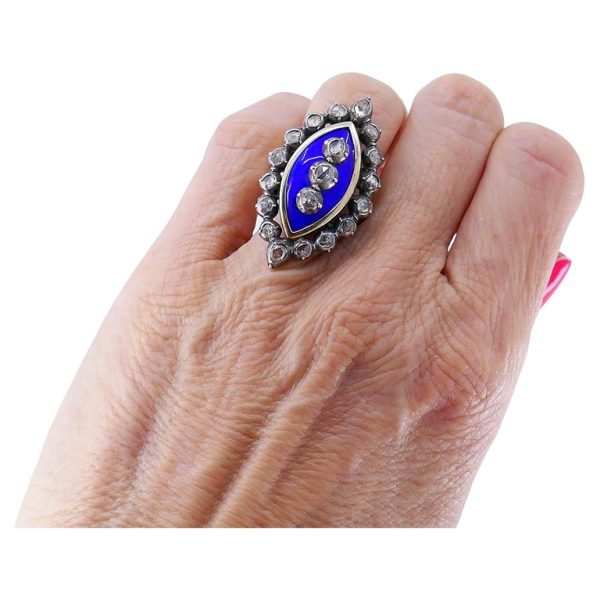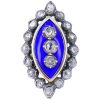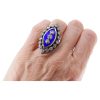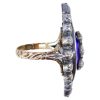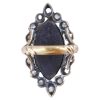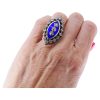About Antique Rings
The artistry of making antique rings reflects the era’s cultural influences. Most antique rings were created by skilled artisans who meticulously handcrafted each piece. This level of craftsmanship allowed for intricate designs that were often time-consuming to produce. This includes filigree work, hand-chasing, granulation (tiny metal beadwork), and hand-piercing to create delicate openwork patterns.
The emphasis on hand-made production is a hallmark of the era’s jewels. Antique rings were typically made from both gold and silver. The jewelers noticed that diamonds look whiter when set in white metal and not in yellow. The white gold was not invented back then yet and platinum was too hard for jewelry tools of that time. The only white metal available for jewelry making was silver. Therefore, during the antique period, most diamonds were set in silver.
Many Victorian-era rings feature intricate filigree work and delicate hand engraving. Setting styles, such as bezel and prong settings, are also different from what is used today. Romantic and sentimental motifs were widely applied to the rings’ look. They often carried symbolic meaning, with specific gemstones conveying messages of love, friendship, or mourning. Acrostic jewelry, where the first letter of each gemstone spelled out a message, was a common form of symbolic expression in antique jewelry. The natural aging process can contribute to their unique character and charm. Patina, which develops over time on metals, adds a sense history and authenticity to antique pieces
About Enamel Jewelry
Enamel jewelry is beloved for its glossy, colorful appearance. Enamel has been used in jewelry making since the 1200s in China and Persia. It flourished again during the Art Nouveau era and had its comeback in the 1970s.
Multiple iconic pieces, such as Panthere De Cartier, Webb Kingdom Collection or the VCA pieces from 1920s are constantly sought after. Today enamel is also widely used in jewelry design.
Enamel is a specifically formulated glass powder, or a paste applied to the metal. After the application it gets heated up to 950°C.
Here are some of the most popular enameling techniques in jewelry making:
– Plique-a-Jour is the most difficult among enameling techniques. Plique-a-Jour was especially popular among such the Art Nouveau artists as Rene Lalique, Louis Comfort Tiffany and Peter Carl Faberge. The name can be translated from French as “to let light in”. The method allows light to go through the piece and make it glow. It’s done by applying the enamel powder in between of the little metal sections while using the foil to hold it together. After the enamel solidifies, the foil gets removed. This process creates a stained-glass appearance with delicate colors and lights coming from within.
– Cloisonné – or hard enamel – is done by layering enamel past the metal line. But first the design is stamped into a metal base. Then it gets polished down to the level of the metal. Due to the lengthier process, Cloisonné is considered more durable and higher quality.
– Meenakari -this technique begins with the design being engraved onto to the metal. Then the enamel fills the etchings. To achieve a vibrant color that Meenakari jewelry is famous for, the piece is polished with organic acids. A layer of transparent enamel finalizes the process.
We have a great selection of enamel jewelry online, or you can see it in person while visiting our store in Beverly Hills.

